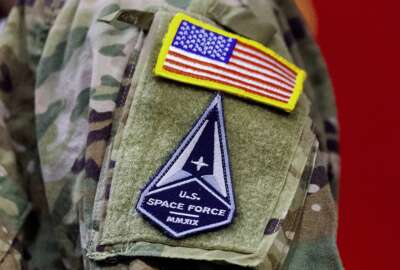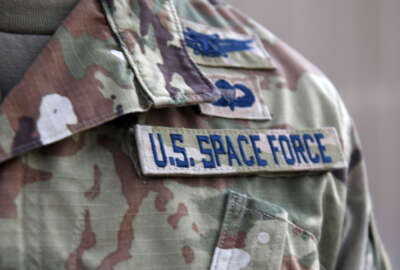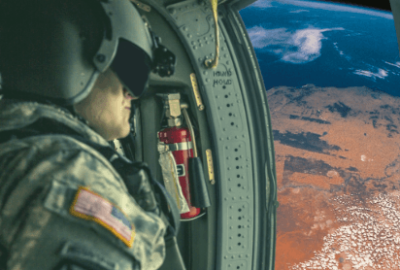Space Force to create more integrated units
"The intent is for all mission areas to be in this Integrated Mission Delta approach. And all done personnel neutral," said Lt. Gen. Philip Garrant.
After nine months of experimentation with a unit-integration concept, the Space Force is getting ready to create two more units, with the ultimate goal of scaling that structure across all mission areas.
Last year, Chief of Space Operations Gen. Chance Saltzman announced two Integrated Mission Delta provisional units: one unit focused on electromagnetic warfare and another one on positioning, navigation, and timing. The idea was to bring all aspects of mission area readiness, including personnel, training, equipment and sustainment functions under one umbrella instead of separating functions into different commands.
“In the next few months, you can look for missile warning and space domain awareness as two mission areas, and then in the future satellite communications, for example, and then orbital warfare,” Lt. Gen. Philip Garrant, the Space Systems Command chief, said during the Mitchell Institute event Tuesday.
“But the intent is for all mission areas to be in this Integrated Mission Delta approach. And all done personnel neutral — you’re not going to require additional manpower to support these efforts. We’re not making people move. We’re not making people to [permanently change stations]. Now, in time, ten years down the road, maybe it makes sense to move some people around. But near-term, that’s not the intent.”
When Gen. Saltzman first announced the new pilot, he said the intention was to reduce organizational inefficiencies within the service. Under the traditional model, Space Operations Command is responsible for space, cyber operations and intelligence operations, while Space Systems Command is responsible for acquisition and program management. The new model allows the service to bring those space and cyber operators, acquisition specialists and program managers under one commander.
Since these efforts have already yielded such positive results, the goal is to complete the rest of the mission areas within the next year and a half.
“It is a pretty significant lift when you look at organizational change requests and some of the restructuring and then making sure that we’re not hurting anyone’s career when we stand up these commands, or we are not making anyone lose their jobs. It’s a very deliberate process. And to make sure we pair these system deltas as appropriately as well,” said Garrant.
Space Operations Command consists of several deltas, each with a specific mission area. That includes Delta 2—Space Domain Awareness; Delta 3—Space Electronic Warfare; Delta 4—Missile Warning; Delta 5—Command and Control; Delta 6—Cyberspace Operations; Delta 7—Intelligence, Surveillance and Reconnaissance; Delta 8—Satellite Communications and Navigational Warfare; and Delta 9—Orbital Warfare.
Under the new structure, the EW sustainment offices have been moved from Space Systems Command into Space Delta 3. But the positioning, navigation, and timing unit is brand new.
Garrant said he is working with Lt. Gen. David Miller, head of Space Operations Command, on mission analysis of the two existing operational deltas — Delta 2, Space Domain Awareness, and Delta 4, Missile Warning.
“Gen. Miller and I owe Gen. Michael Guetlein an integrated progress review here in a couple of weeks. We’re doing mission analysis,” said Garrant.
These changes come amidst the Air Force’s efforts to reshape the service’s structure.
Copyright © 2025 Federal News Network. All rights reserved. This website is not intended for users located within the European Economic Area.







